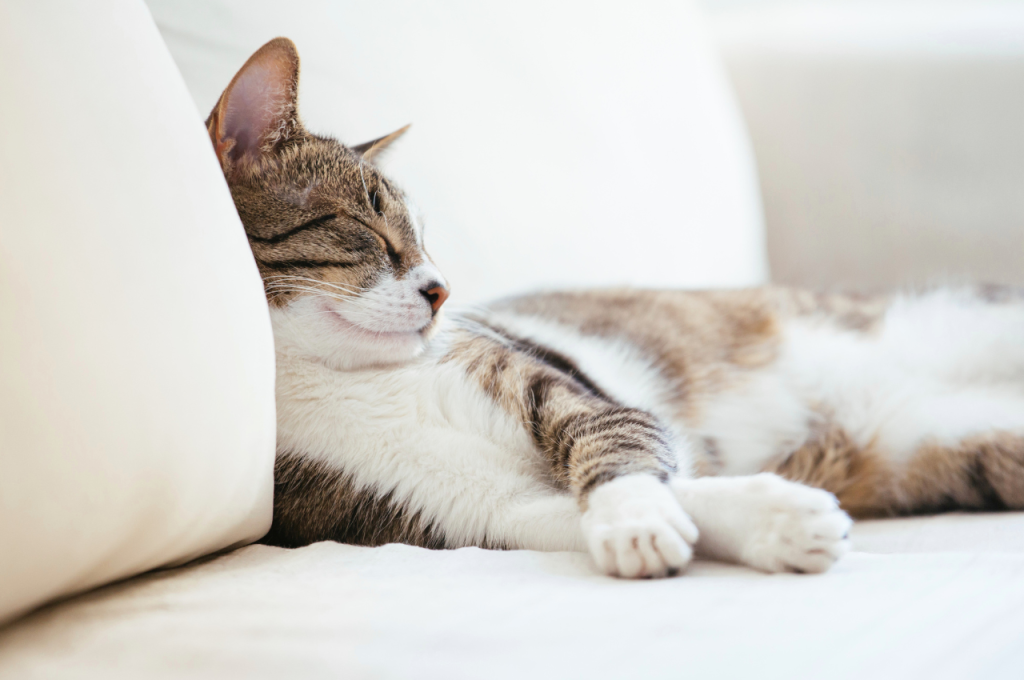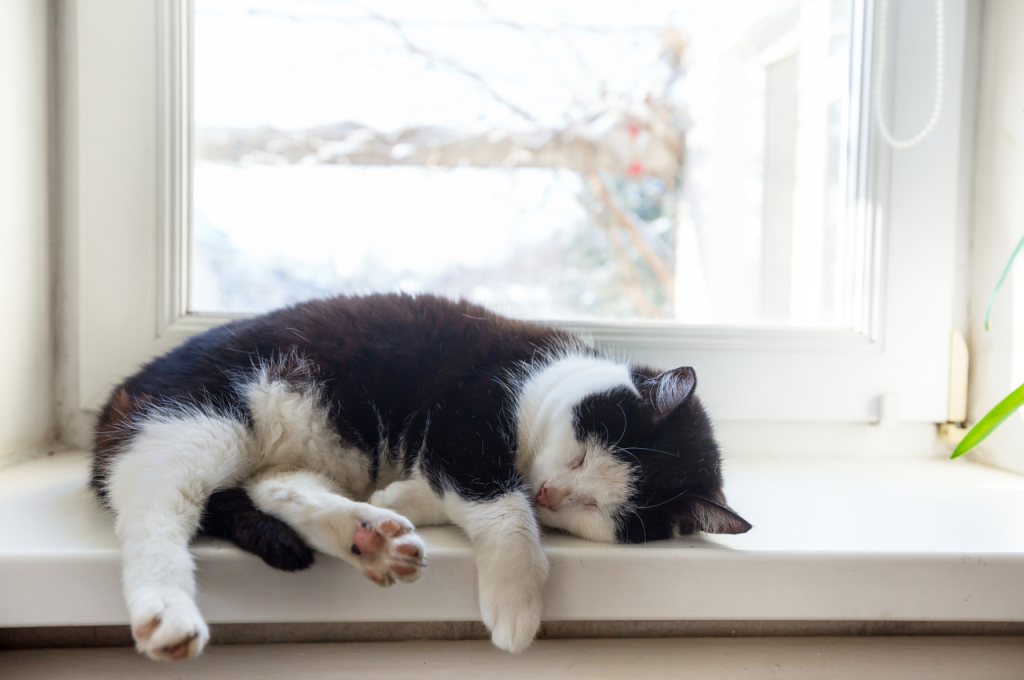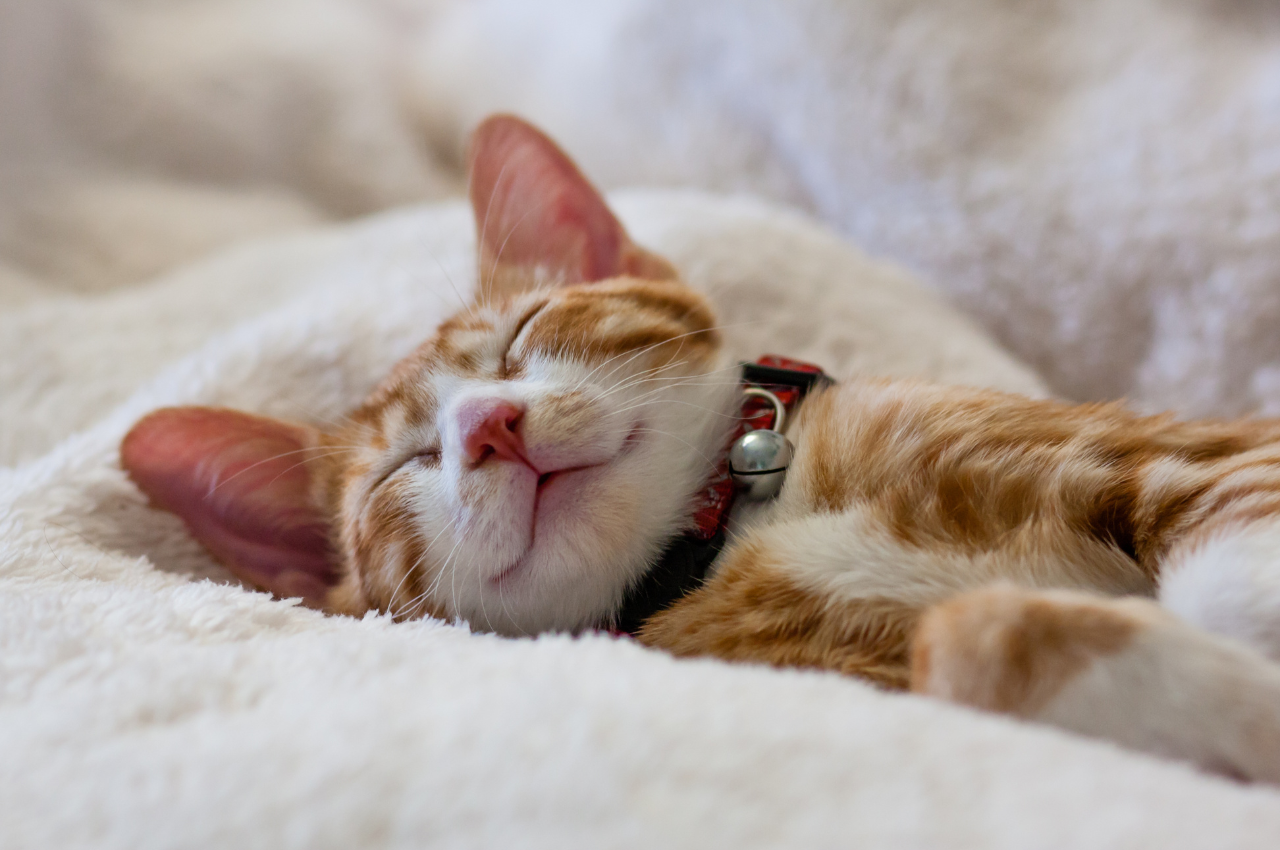Your cat may be sleeping too much due to age, illness, boredom, or stress. It’s essential to monitor your cat’s behavior for any changes and consult a vet if necessary.
Do you find yourself wondering why your feline companion seems to be dozing off more than usual? Cats are known for their love of napping, but excessive sleep could be a sign of an underlying issue. In this blog post, we will explore the reasons why your cat may be sleeping excessively and what steps you can take to ensure your furry friend’s well-being. Let’s dive in and uncover the potential reasons behind your cat’s increased slumber time.
The Feline Sleep Phenomenon
Cats sleep a lot as it’s part of their nature. They typically sleep 12-16 hours a day. However, excessive sleeping could be a sign of illness or stress. Ensure your cat has a comfortable and safe environment, and consult a vet if you notice any changes in their sleeping patterns.

Cats are known for being the embodiment of tranquility and serenity. They have the uncanny ability to sleep for hours on end, which often leaves their owners wondering if their cat is okay. However, the truth is, that cats are designed to sleep for long periods of time, and it is a natural part of their biology.
Natural Sleep Patterns of Cats
Cats are crepuscular animals, which means they are most active during dawn and dusk. They typically sleep for around 12-16 hours a day, broken up into several naps. This sleep pattern is a result of their evolution as nocturnal hunters. Cats would hunt at night and sleep during the day to conserve their energy. Even though domestic cats have adapted to their life with humans, their sleep patterns have remained the same.
Comparing Domestic Cats to Wild Relatives
Wild cats, such as lions and tigers, also have a similar sleep pattern. They sleep for around 16-20 hours a day, which allows them to conserve their energy for hunting. However, domestic cats have the luxury of not having to hunt for their food, which means they can sleep even more. This is why indoor cats tend to sleep for longer periods of time than outdoor cats.
The feline sleep phenomenon is a natural part of a cat’s biology. Their sleep patterns have evolved over time to ensure they conserve their energy for hunting. As cat owners, we should not be worried if our feline friends sleep for long periods of time. Instead, we should embrace their tranquil nature and let them sleep in peace.
Decoding Cat Sleep Cycles
Decoding cat sleep cycles can be quite a challenge, especially if you are a new cat owner. If you have ever wondered why your cat sleeps so much, you are not alone. Cats are known for their ability to sleep for long hours, and while it may seem like they are just being lazy, there is actually a lot more going on behind the scenes. In this article, we will explore the stages of cat sleep and the role of REM sleep in cats.
Stages of Cat Sleep
Cats go through two stages of sleep, which are non-REM (NREM) and REM sleep. During the NREM stage, cats experience deep sleep, which is characterized by slow brain waves, relaxed muscles, and a decreased heart rate. This stage is important for physical restoration and growth, as well as for the immune system to function properly.
During the REM stage, cats experience rapid eye movements, and their brain waves resemble those of an awake cat. This stage is important for cognitive restoration and processing of information. REM sleep is also associated with dreaming, and cats may twitch or move their paws while they sleep.
The Role of Rem Sleep in Cats
REM sleep is crucial for cats because it helps them consolidate memories and learn new things. Studies have shown that cats deprived of REM sleep have difficulty learning and retaining new information. REM sleep also plays a role in regulating mood and emotions, and cats that are deprived of REM sleep may exhibit signs of anxiety and irritability.
In addition to cognitive and emotional benefits, REM sleep also plays a role in physical restoration. During REM sleep, cats experience an increase in heart rate and respiration, which helps to supply oxygen to the brain and body. REM sleep is also important for the immune system, as it helps to boost the production of immune cells and antibodies.
In conclusion, understanding the stages of cat sleep and the role of REM sleep can help you better understand your cat’s behavior. While cats may seem like they are sleeping all day, they are actually undergoing important processes that are crucial for their physical and cognitive health. By providing your cat with a comfortable and safe sleeping environment, you can help ensure that they get the restorative sleep they need to stay healthy and happy.
Factors Influencing Cat Nap Duration
Several factors can influence a cat’s nap duration, including age, activity level, and health. It’s normal for cats to sleep for long periods, but excessive sleepiness could indicate an underlying health issue. Keeping an eye on your feline friend’s sleeping habits can help you gauge their overall well-being.

Factors Influencing Cat Nap Duration When it comes to our feline friends, it’s no secret that they love their beauty sleep. But have you ever wondered why your cat seems to be sleeping so much? There are several factors that can influence the duration of your cat’s naps, including their age and development, as well as their activity levels and lifestyle. Age and Development Cats, just like humans, require different amounts of sleep depending on their age and development. Kittens, for example, are bundles of energy and tend to have shorter, more frequent naps throughout the day.
As they grow and mature, their sleep patterns will start to resemble those of adult cats. Activity Levels and Lifestyle Another factor that can affect your cat’s nap duration is their activity levels and lifestyle. Cats that are more active and engage in regular playtime will naturally require more rest to recharge their energy levels. On the other hand, cats with a more sedentary lifestyle may sleep longer as they have fewer opportunities for physical exertion.
Additionally, factors such as stress, temperature, and comfort can also influence how long your cat sleeps. If your cat is feeling anxious or uncomfortable, they may seek solace in longer naps as a way to cope with their emotions. In conclusion, understanding the factors that influence your cat’s nap duration can help you provide the right environment and care for their well-being. By considering their age, and activity levels, and addressing any underlying stressors, you can ensure that your feline friend gets the rest they need to stay healthy and happy.
Health and Sleep: Are They Interlinked?
The connection between health and sleep is crucial, even for cats. Excessive sleep in cats can signal underlying health issues, such as stress, illness, or simply the need for more rest. Monitoring your cat’s sleeping patterns can provide valuable insights into their overall well-being.
Common Health Issues Affecting Sleep: Cats’ sleep patterns can be influenced by various health conditions. Observe changes in your cat’s sleeping habits to detect underlying health issues.
When to Worry About Your Cat’s Sleep Habits
Common Health Issues Affecting Sleep: Obesity, diabetes, and arthritis can affect a cat’s quality of sleep. Monitor your cat’s sleep patterns and consult a vet if you notice significant changes.
The Impact of Diet On Cat Sleep
Understanding the impact of diet on your cat’s sleep patterns is essential for ensuring their overall well-being. A cat’s diet plays a significant role in their sleep quality and quantity. By making informed choices about their nutritional intake, you can help promote better sleep habits for your feline companion.
Nutritional Needs and Sleep Quality
A cat’s nutritional needs directly influence their sleep quality. Ensure that their diet is well-balanced and provides adequate nutrients such as protein, vitamins, and minerals. Quality food supports their overall health and contributes to restful sleep.
Food Intake Timing
The timing of food intake can also impact your cat’s sleep. Avoid feeding your cat a large meal right before bedtime to prevent discomfort and promote a more peaceful sleep. Spacing out their meals throughout the day can help regulate their energy levels and sleep patterns.
The Environment’s Effect on Cat Napping
When it comes to our feline friends, it’s essential to understand the factors that can influence their sleep patterns. The environment plays a significant role in a cat’s napping habits. Here’s a closer look at how the surroundings can affect your cat’s sleeping behavior.
Creating a Sleep-friendly Habitat
A comfortable and soothing environment is crucial for your cat’s sleep. Soft bedding, cozy blankets, and a designated sleeping area provide a sense of security. Placing the bed away from high-traffic zones and noisy areas can also promote uninterrupted sleep.
External Disturbances and Stress
External disturbances such as loud noises, bright lights, or sudden movements can disrupt a cat’s sleep. Minimizing these disturbances and creating a calm atmosphere can help reduce stress and promote healthy napping habits.
Interpreting Cat Behavior During Sleep
Cats are known for their love of sleep, often spending up to 16 hours a day snoozing. While it’s common for cats to spend a significant amount of time sleeping, interpreting their behavior during sleep can provide valuable insights into their well-being and overall health. Understanding the various movements, vocalizations, and dreaming patterns of cats during their slumber can offer valuable clues about their physical and emotional state.
Understanding Twitches and Movements
Cats may exhibit twitches and movements during sleep, which can vary from subtle muscle contractions to more pronounced jerking motions. These movements are often a sign of the cat transitioning between different sleep stages, particularly the REM (rapid eye movement) phase. During REM sleep, cats may twitch or move as a result of the brain activity associated with dreaming.
Vocalizations and Dreaming
While cats may appear to be silent during sleep, they can sometimes emit vocalizations such as meowing or chirping. These sounds may indicate that the cat is dreaming. It’s important to note that these vocalizations are a normal part of the dreaming process and are not necessarily indicative of distress or discomfort.
Enhancing Your Cat’s Sleep Quality
Cats are known for their love of sleeping, with the average cat spending up to 16 hours a day napping. However, if you notice your feline friend sleeping excessively even by cat standards, it may be a cause for concern. By enhancing your cat’s sleep quality, you can ensure they are getting the rest they need to stay healthy and happy.

Choosing The Right Bed
When selecting a bed for your cat, consider their sleeping preferences. Provide a bed that is appropriately sized and offers supportive cushioning to promote comfortable and restful sleep. Look for soft and cozy materials that will appeal to your cat’s natural desire for warmth and security.
Establishing a Routine
Creating a consistent sleep routine can help regulate your cat’s sleeping patterns. Establish regular feeding times and engage in play sessions to encourage physical activity during the day, promoting more restful sleep at night. Designate a quiet and cozy sleeping area away from high-traffic areas to minimize disruptions.
Conclusion
To sum up, if you’ve been wondering why your cat is sleeping so much, there are a few factors to consider. Cats naturally sleep for long periods, and it is usually normal behavior. However, excessive sleep could be a sign of underlying health issues or a change in their environment. It’s important to monitor their sleep patterns and consult a veterinarian if you have any concerns. Understanding your cat’s sleep habits can help ensure their overall well-being and happiness.
